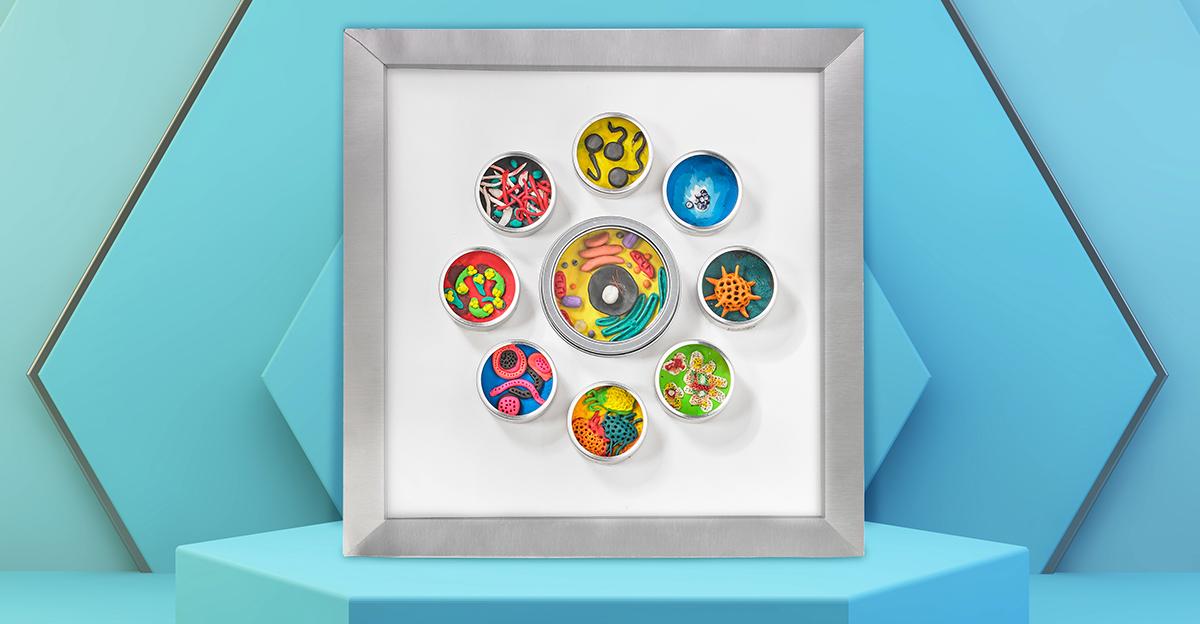If you haven’t studied the beautiful world of microbiology, you’re missing out! A quick Pinterest search presents thousands of spectacular images, each boasting vibrant colors, unique shapes, and incredible construction. Study the intricate network of golden blood vessels that surround the small intestine. Even the healthy, everyday bacteria that live symbiotically in our bodies come in amazing shapes and colors ranging from bright green to purple.
The young artists in your class will be dazzled by microbiological imagery and likely even more impressed when they learn the critical roles these molecules, cells, and systems play in their own lives. Why not invite your school’s science teacher to your art room for a brief overview of microbiology, basic cellular structures, and some of the more important biological functions of the body, followed by a review of some of the more impressive images you’ve compiled, either projecting digital images on your overhead or observing real-life specimen through a microscope?
Our Observe and Invent: Creative Microbiology in Clay cross-curricular lesson plan will guide them through the process of recreating specific cells and molecules, blending science and biology with art and encouraging scientific observation, hands-on learning, and artistic creativity. Students begin with a study on color mixing clay to achieve desired hues and tones, then use the clay to replicate a cell or system, and sculpting tools to add detail.
Once students get a good sense of the shapes, colors, and construction of biological materials, challenge them to sculpt a new molecule or microbiological system and explain to the class what their creation is and how it could change the natural world. You might even consider donating some of the better or more creative models to your science department as a thank you for their lesson.
Click to view the plan, including step-by-step instructions, a complete materials list, and a photo of a finished piece.
For grades 4-12.






Leave a Reply